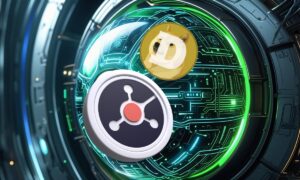Blockchain technology has become one of the greatest innovations in history. It brought along with it, myriads of opportunities and yet-to-be-explored possibilities, the trending of which are the Metaverse and NFT. Terry Kilby, Co-Founder of Blockchain Relics is preserving history through blockchain and NFTs and will be telling us more about the project in this interview with TechBullion.
NFTs have been gaining popularity in recent times. Why do you think people are catching on to the NFT trend?
I think different people are drawn to NFTs for different reasons. Probably a majority of the recent flood of new interest comes from crypto native individuals and is certainly due to the speculative nature of the space. People are after their own rags to riches NFT story where a hundred dollar punt becomes a half million dollar come up. It’s the new crypto powerball and, in my opinion, is way more fun than a typical meme token. I think other people are genuinely interested in the art and, more recently, the music, and like to collect things that are beautiful to look at or pleasant to listen to. Others are into the tech behind these things and the idea that someone can have ownership of a unique digital item that exists immutably, forever. We have designed Blockchain Relics to appeal to all of these groups in one way or another.
What made you choose NFTs as your medium for Blockchain Relics?
Blockchain Relics is first and foremost a digital archiving and preservation organization. We are dedicated to capturing contemporary history with new immersive technology. We see these types of 3D scans as historic records of the world we inhabit for future generations. The idea of an immutable ledger that can be accessed virtually anywhere seemed like a perfect fit for our goals. I think blockchain technology will someday become widely used for historic recordation, and we want to help others see the advantages it brings.
How did you first come up with the concept of Blockchain Relics?
I have been a 3D scanning specialist in the historic preservation field for close to a decade now. I’ve scanned everything from handheld artifacts for museums to entire city blocks for preservation committees. It was always exciting working on these projects and the thought of sharing those resulting 3D models with people far and wide pushed me to create the best work I possibly could. Unfortunately, after a while I began to notice that even after herculean efforts on the part of the 3D scanning team, the objects were barely experienced online afterwards. I wanted to come up with a better way to share these models with the world so people can easily experience their shared history, and Web3 is perfectly suited to do that. Seeing these types of assets show up in a Metaverse world or shared in Augmented Reality just felt like the next logical step.
What was your main motivation behind developing this project?
The first time I showed up to shoot the Lee monument, I knew this was a historic moment that carried significant weight and needed to be archived as a historic record. This was larger than me and needed to be placed in the hands of a proper custodian that could ensure it remains accessible for generations. Historically, this meant finding a museum or longstanding institution to take ownership of the art. While I am not against that approach, I began to see how the blockchain could serve a similar role. The more thought that was put into it, the more sense it made to pursue this as a new approach to recording history.
What is the vision of Blockchain Relics, how do you want people to recognize you?
Blockchain Relics is not about a single NFT drop or immersive experience, it is about a movement to change the way in which we record history. Together, for everyone, everywhere. We have three main objectives. Record history with new technology, empower others to do the same, and support not for profit groups we feel are doing good in the world.
We want to help educate people how this technology works and how they can use it to record their own history. For our first release, we have partnered with the non-profit group Global Air Drone Academy. They will provide free drone and photogrammetry STEM classes to middle & high school students throughout the Richmond area. We plan to attach a non-profit to each of our NFT releases to provide further education and social services to local communities attached to the projects.
Which aspects of Blockchain Relics do you think are most appealing to today’s younger audiences?
I think that young people today are much more socially conscious than I was at that age. My biggest concerns as a kid were skateboarding, music, and sports. I grew up as the internet was just becoming a thing, so most of my childhood was devoid of that constant flow of information (of which there are definitely pros and cons). So, kids today are much more aware of what is going on in the world around them and they have lived through some incredibly tumultuous sociopolitical times. Nobody with access to the internet missed what was happening in America in the summer of 2020 and I think young people on both sides of the political spectrum were involved in this historic discourse. So I think this part of what Blockchain Relics offers really resonates with young people today. The other aspect that I think is appealing to them is the technology itself. This project uses several cutting edge technologies to deliver an immersive experience. We have drones combined with advanced 3D scanning and imaging combined with AR and VR combined with blockchain technology. Blockchain Relics takes historical significance and weaves it with interactive technology to deliver a fun and educational experience to the user.
How is Blockchain Relics standing out among the other NFT projects in the market?
There is nothing like Blockchain Relics in the space. Nothing even really comes close. For starters, we are not your typical generative cartoon animal profile picture NFT. It is a collection of individually unique pieces, but that is where any comparison to most generative NFT projects ends. The artwork here is not generated by a line of code, but rather done by hand, with intention. It was a communal story telling project participated in by each and every person that visited the monument. Each scan is manually cut into individual blocks, its location in the whole is mapped and stored on chain. A really cool feature in Blockchain Relics is that there is a sense of community built into the the project by default. What I mean by that is that even though each piece of the monument is unique, it makes much more sense when viewed as part of the entire structure. We really like this parallel to web3 communities. Aside from the obvious visual differences, there is quite a bit more going on under the hood. We have developed a custom smart contract that will allow blocks to be combined and minted into larger blocks. This is an important feature as it basically makes each scan a giant 3D puzzle that can be assembled by the community. As holders connect more pieces they will unlock additional features both digital and physical. In addition to all that, Blockchain Relics has a charitable aspect as well. One of the coolest features of this entire project is that it allows us to make financial contributions to groups that will further our goals of preserving history, educating people about scanning technology, and enriching the local communities that are directly connected to each monument we scan.
What kind of unique blockchain/web3 technology does Blockchain Relics use?
Every aspect of the front end and contract development has been custom made for this project. A unique front end will connect with users’ wallets to show them exactly where their block exists in the whole Lee monument. It will also allow users to find what blocks are directly around their block and able to be connected like a puzzle piece to unlock content. We have some really special things planned for this aspect of the project and don’t want to give too much away, but the entire idea is for holders of this NFT to be able to unlock content as well as share their stories in the same way that the protesters shared theirs in the form of the artwork they left behind.
The project is said to use drone photography for 3D scanning of monuments and artifacts. For how long have you been involved with drone photography and why do you believe it is ideal for Blockchain Relics projects?
I started designing my own drones from scratch back in 2009 and got into photogrammetry shortly there after. At the end of the day, a drone is simply another tool in the toolbox of a photogrammetrist. The primary goal of shooting photos for photogrammetry is to capture the subject from every possible angle, so drones have a huge advantage with that regard. That being said, there have been several projects in the past where drones were simply not an option and we go back to the toolbox and find the tools that work for that environment. In 2016 I was asked to scan the Jose Marti statue in Central Park so a copy could be fabricated and gifted to the city of Havana. Drones were not allowed in the park, so we had a lift on site that got us into the proper positions we would normally put the drone in. It was a lot more work, but the end product was the same and that is all that matters. There is always a way to get the data needed, I just find that drones are the most efficient method for 90% of the projects I have worked on. Plus, what is more fun that flying a drone for work?
How does the Blockchain Relics team plan to work out the permissions and legalities of scanning historical monuments in various countries where rules and regulations differ?
Due diligence on our part is the first step. We have to be very aware of those legalities and work within those parameters. In the long term, we see collaborations with monument custodians and community leaders which will certainly make the process much easier.
Considering the ever-changing nature of the blockchain space, where do you see Blockchain Relics in the next 5 – 10 years?
We are here for the long haul, as any proper custodian of historic records should be. Ideally this will become a community driven initiative with input on what to document and when. We view this as the democratization of history recordation and hope others see the value in this major shift in protocol that we do. There is an old saying that “history is written by those in power” and that has always rubbed us the wrong way. History should not be a filtered collection of artifacts deemed appropriate by those in power, it should be archived by every day citizens who are living that history every day of their lives. We think that has staying power and will prove to be a key differentiator to our efforts compared to the current standards.
What are the biggest challenges you anticipate for Blockchain Relics in the near future, and how do you plan to overcome them?
Being first to do something is always a risk and we are acutely aware of how this risk is amplified in the crypto space. We are presenting the world with an entirely new way to look at, and interact with, historically and culturally significant artifacts and so we are anticipating some people may be slow to adopt. Netflix was still mailing dvd’s to people for a bit while the streaming service existed! The great thing about Blockchain Relics is that the interface we built is really intuitive and fun to play around with so we believe the solution to one of the biggest challenges we face is baked right into the project.
We’ve come across Blockchain Relics work at Deep Fakes Exhibition at EPFL Pavilions in Switzerland, could you tell us more about it?
In early 2021 The Swiss Federal Institute of Technology in Lausanne (EPFL) contacted me about an exhibition based on advanced computer imaging. We ended up collaborating on an installation called Speaking Back. Museum goers are able to navigate through two different 3D scans of the monument, as well as a high resolution 360 pano of the site, through a custom Unreal app running on an 82 inch touch screen monitor. We also have audio from some of the protests playing in the background. The combined visual and audible experience is beyond moving and I couldn’t have been happier with the final product. The exhibit opened in September and was originally scheduled to end on February 6th, but it was so well received they extended the run through May 1st.
You mentioned your past work with museums and more traditional custodians of historic artifacts. Can you tell us a little more about that and how it ties in to Blockchain Relics?
Museums have been 3D scanning their own art internally for a few years now, but more recently began to look at scans of outside work for their collections, especially when that original work is not able to be physically acquired. We are currently in talks to add two of the four scans of the Lee monument to the permanent collections of museums we feel would serve as a proper custodian. One will go to a national museum and one to a state level museum in Virginia. We feel the best method to ensure the longevity of these documents is to spread them out amongst several holders, including the new idea of using the blockchain for historic recordation. The two institutions who take possession of the scans will make them available to the public through existing infrastructure, and make sure they stay accessible for generations to come.
Can you share with us some alpha of what other monuments will be preserved in future?
There are few scans ready to go, but we want to get feedback from the community on what should follow. Recording history is a calling that must have the input of all. We don’t want to become gatekeepers of what we archive, merely the vessel that makes it possible.
On behalf of our readers, what’s the best way to get whitelisted for Blockchain Relics NFTs?
We plan on doing some limited whitelisting through other projects that we think have strong communities, but the easiest way to be whitelisted will be to be an active community member, particularly on discord.
How can we stay tuned to Blockchain Relics updates & become a part of the community?
The best way to keep up to date on the project is to follow us on twitter. The discord will be opened soon and will be announced on twitter.



































